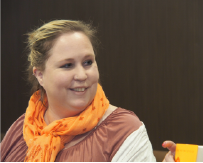
~ 3 minute read
We are all in this situation together
Each of our situations are unique; some of us are finding it manageable and nice to slow down; Some of us are finding it overwhelming and are juggling many different roles; some of us work in frontline healthcare or have family who work in health care; and some of us may have friends or family directly impacted by COVID 19. All these experiences can bring up a range of different emotions, thoughts and even physical sensations. There is no right or wrong way to feel. We have no roadmap and even if we did, each person’s journey would be completely different. A helpful tool can be our own moment to moment awareness. Without judgment, and with compassion. We can’t do this wrong. All our feelings are valid. Essentially, this moment to moment awareness without judgement is mindfulness.
When the term mindfulness comes up, many people automatically think of meditation. Formal meditation and mindfulness are not the same thing. When people think of meditation, they often think of clearing the mind. Of non-worry. Of peacefulness. Of some sort of elusive experience of spiritual bliss. Perhaps this is true for monks who for many years, practice daily. Let’s be clear, this is a noble and faith-filled path but it is not what most people attain. Nor should it be the goal. In fact, in mindfulness, striving for a specific feeling or experience is the exact opposite of mindfulness.
An oft-quoted Kabat-Zinn, and the definition of mindfulness that I turn to the most, is this:
“Mindfulness means paying attention in a particular way, in the present moment, and non-judgmentally”
Let’s take a moment to break that down. That doesn’t sound anything like striving for some sort of stillness or inner peace. If it was only so easy to think your way to peace and stillness. The “try harder” approach to a quiet mind and less worry is a recipe for frustration and in fact, more worry.
Mindfulness is acceptance
I understand that accepting the present state of things and our reactions around it, is difficult. We want things to go back to how they were and if they can’t go back to how they were right now, we want to know WHEN. When will the old normal return? Will the new normal look like the old normal? How much longer can I do this? How much longer will my kids be without in class teaching, with anyone but me being their teacher?? When will they be back to programs and therapy and swimming lessons? When can they swing on swings in the local playground again?
Mindfulness is allowing space and purposeful intention for feelings to be what they are
To feel them. To experience them. To not hold on to them. To experience them, as an observer and then to let them go. You are experiencing the emotions and sensations. You are not the emotions and sensations. That difference may seem minimal, but in fact, it is major. That shift is significant. Allow yourself that pause. Allow yourself to know whatever rises and whatever you are feeling is okay, even if in the moment it doesn’t feel okay.
If the idea of allowing yourself to experience all these emotions and sensations seems too much, that’s okay. In those moments, pick something to do that can distract you. Something you can put your intention and attention to. This could be putting together Lego with your child, baking, getting a garden ready, listening to music (really listening), doing dishes by hand, doing yoga, or going for a socially distanced walk…. Essentially find something to do that centres you, even if just for a few moments.
Remember that you can’t do this wrong
This is a new experience for all of us. But the one thing I’d like everyone to try a bit more, is to remember to turn compassion inwards. To shed some positive light on yourself.
About Stephanie Moeser, BSW, MSW, RSW
Stephanie Moeser, M.S.W., has over 20 years of experience working with parents, caregivers, siblings and neurodiverse people; particularly teens and adults on the spectrum. The primary focus of Stephanie’s practice is providing counselling supports to youth and adults with ASD and their families.
DISCLAIMER: This document reflects the views of the author. It is Autism Ontario’s intent to inform and educate. Every situation is unique and while we hope this information is useful, it should be used in the context of broader considerations for each person. Please contact Autism Ontario at info@autismontario.com or 416-246-9592 for permission to reproduce this material for any purpose other than personal use. © 2020 Autism Ontario 416.246.9592 www.autismontario.com


